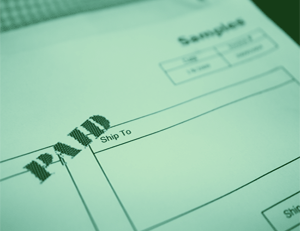Business Planning: Marketing and Sales
The marketing and sales section of your business plan should cover the basics; your target market and competition, defining your product messaging, pricing, and other marketing strategies to maximise sales.
Marketing is not just advertising; marketing is an investment in the growth of your business. Like any other investment, money spent on marketing must generate a return. With that in mind, the aim of the Marketing and Sales chapter of your business plan is to answer the question “How will I reach my customers?”.
To answer this question, you can expand on the following:
Product
Describe the product or service offered to your customers. This should include what the product or service is, what it does, how it differs from your competitors and what benefits it provides to potential customers. You can include a brief summary of your SWOT exercise findings which we covered in your competitor analysis.
Price
Outline your pricing strategy that will help you reach your sales targets. How will the pricing structure look to customers and how does it measure up with your competitions pricing? If your pricing is higher or lower than your competitors, explain why you made this decision – do you use better quality material or ingredients, is your packaging sustainable etc.
When assessing the price, make sure you take into consideration the calculations covered in the finances section of your business plan. You need to ensure that fixed and variable costs are covered in your pricing, this will allow you to see your profit margins and adjust where necessary.
Hubspot have a great break down of what to include in a pricing strategy, as well as a free pricing strategy calculator.
Distribution
If you are selling a product or service, you need to specify how your customers can purchase it it. For example, will you sell online or in a physical store. If you are selling from a store, expand on how many locations are involved and how many products or services you anticipate will be sold at each location.
Another factor to include is delivery. Will your product or service need to be delivered and if so, what cost will you incur, or will you pass it on to the customer? You also need to decide if you will only ship locally or globally, and whether you will include insurance or make it an optional extra? Look at shipping providers and find out what discounts they offer for businesses, and if you would benefit from setting up an account.
Promotion
What promotional activities are you going to use to promote your product or service to your potential customers? If you are going to advertise, where and what is the expected cost? Will you be running promotions on social media platforms and who will be managing the accounts? Are you going to have any special offers, coupons, or incentives to get customers onboard? These ideas all need to planned and have associated costs attached to them to ensure you stay within your budget.
Sales
You will also need to produce a sales strategy that identifies how you will sell your product/ service and any aftersales service you may want to provide. Define what your sales process looks like – will you have someone on the ground, or will it be purely online sales, what if people have questions prior to purchase – how will you service these inquiries?
Your sales strategy should identify what kind of product or service training is required for what stage of the buying cycle, outline any incentive program for your sales or customer service team and build any costs associated with these activities into your budget. For example, training could be for two days which will cost you pay for both the person and the trainer.
An important section to cover in your sales strategy is how you are going to generate leads and monitor progress? There are lots of potential options for you to use to do this, such as, a form on your website asking for contact details, or a free trial of your service that you promote on social media. The key thing to consider is how you will track these leads and ensure they are followed up for the best outcome – a sale.
You can also briefly run through the expected sales you are anticipating in the first year based on your budget from the financial section of the business plan. This will allow you to align your sales forecast and financial budget, so they are working together to achieve the same outcome.
Finally, include any marketing material you have developed so far including your logo, signage, website designs, or leaflets. Make it simple for the reader of your business plan to visualise your idea and see how it will look in real life. The more you can bring your plan to life the easier it is for investors, or the bank to see the potential for success.
Check out this blog from Pipefy which has some great ideas for small business sales strategies that you could implement in your business.












Leave a Reply